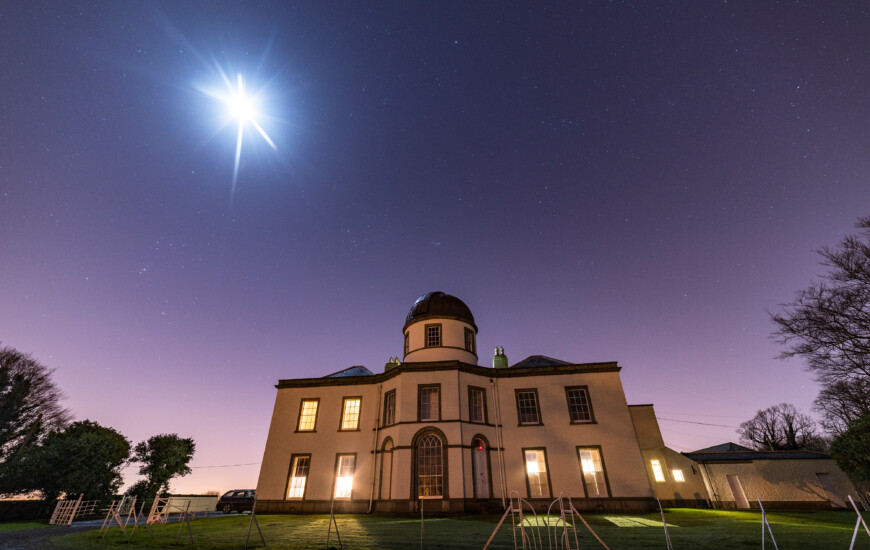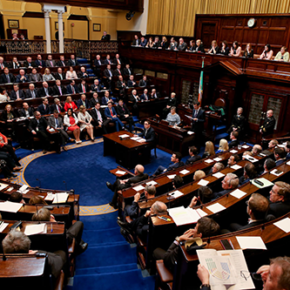Dunsink Observatory in line for UNESCO status
Dublin People 23 Apr 2025
The Astronomical Observatories of Ireland (AOI) has welcomed the announcement by Minister for Housing, Local Government and Heritage James Browne that the Dublin Institute for Advanced Studies (DIAS) Dunsink Observatory has been added to Ireland’s Tentative List of UNESCO World Heritage Properties.
This is an important first step in the journey towards seeking their designation, together with Armagh Observatory in Northern Ireland, as a World Heritage Property. Achieving this would elevate the observatories to a status comparable to other iconic landmarks already recognised by UNESCO on the island – Brú na Bóinne, County Meath, Sceilg Mhichíl, Co. Kerry, and the Giant’s Causeway and Gracehill Moravian Church Settlement in Co. Antrim.
The AOI partnership announced its aspirations to seek World Heritage status at the signing of a Memorandum of Understanding between the partners in September 2023. This proposed transboundary bid between Ireland and the UK seeks to secure international recognition and protection for the sites of the three members of the partnership – Armagh Observatory and Planetarium, Dublin Institute for Advanced Studies (DIAS) – Dunsink Observatory, and Birr Castle Demesne.
Dr. Eucharia Meehan, CEO and Registrar of the Dublin Institute for Advanced Studies (DIAS) who is a custodian of Dunsink Observatory said: “Securing a place on the Irish Government’s Tentative List for achieving UNESCO World Heritage status is a fantastic recognition of the observatories’ unique, historical heritage and very apt on this World Heritage Day. We thank the Minister and the Department for their vision and endorsement of the importance of these astronomical sites, and for their future support of the nomination bid. We also acknowledge the support of our three local authorities – Fingal County Council, Offaly County Council, and Armagh City Banbridge and Craigavon Borough Council, each of whom has embraced the significance and value of the observatory in their area.”
“In all three locations, the sites play a major role in the community through public engagement events and outreach programmes. Designation as a World Heritage Property would no doubt increase local pride as well as encouraging tourism for the areas in question – enriching the lives of the neighbouring communities, and beyond. We will work closely with these communities and other stakeholders as our UNESCO journey progresses.”
Prof. Peter Gallagher, Chairperson of Birr Castle Demesne and Director of DIAS Dunsink Observatory said, “The scientific heritage of all three sites cannot be overstated. The telescope in Birr Castle was the largest in the world for seven decades and remains today a place of scientific endeavour and significance. We need to protect the heritage of all three sites, conserve, preserve as well as educate on the importance of science for society and to inspire the next generation.”
Professor Michael Burton, Director of Armagh Observatory and Planetarium said: “The classical form that we associate with the modern astronomical observatory, of a telescope mounted on a pier inside a rotating dome, began with Dunsink and Armagh at the end of the 18th century. Through their telescopes, which are still in situ and in working condition today, can also be traced the development of the equatorial telescope through the 19th century, one that is able to automatically track the stars as they rotate across the sky each night. We look forward to now working with our partners in Birr and Dunsink in seeking designation to the UK’s Tentative List, the next stage in the journey towards seeking UNESCO accreditation.”
DIAS Dunsink Observatory has been a centre for astronomical research and public engagement in Ireland since its foundation in 1785, and has been home to many of Ireland’s most famous scientists, including Sir William Rowan Hamilton. Birr Castle Demesne began as a private observatory of the 3rd Earl of Rosse. It is most famous for the Great Leviathan of Parsonstown, built in 1845, then the largest telescope in the world. Armagh Observatory and Planetarium was established in 1790 by Archbishop Richard Robinson.? It is the oldest scientific institution in Northern Ireland and the longest continuously operating astronomical research institute in the United Kingdom and Ireland.??











